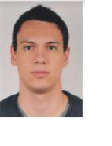
Dieraert Axel
CEA, DAM
France
Title: printing of ceramic-based porous structures using stereolithography
Biography
Biography: Dieraert Axel
Abstract
Stereolithography-based additive manufacturing (AM) is increasingly becoming the technology of choice for the small series or single unit production. It also allows the material-by-design fabrication, prime concern for most material chemists. State-of-the-art of three-dimensional (3D) structured organic-inorganic hybrid materials will be described and focus onto combined 3D printing technology and sol-gel ceramic-based material preparation will be emphasized.
Although the spectrum of available 3D-printed materials has been widened in recent years, there is still a lack of ceramic-based materials which can be processed with stereolithography on a routine basis. The extremely high melting point of many ceramics adds challenges to additive manufacturing as compared with metals and polymers. Because ceramics cannot be cast or machined easily, three-dimensional (3D) printing enables a big leap in geometrical flexibility and microstructured architecture.
We report work on synthesis new ceramics from preceramic monomers or inorganic nanopowder loaded resins that are cured with ultraviolet light in a stereolithography 3D printer. After a thermal debinding and sintering step the part turns into a dense ceramic open structure and gains its final properties, with uniform shrinkage and porosity control.
The paper discusses the critical process parameters that influence polymerization uniformity and structure quality. Currently it is possible to print 3D-structures with a spatial resolution down to 40 μm, with complex shape and cellular architecture. The photosensible resin formulation is a key parameter to control the printing resolution, so the geometry of the final ceramic. Highly complex three-dimensional open microstructures have been theoretically designed to lead to the best agreement between thermal insulation properties and mechanical toughness.
Experimental characterization and performances of the AM ceramic parts will be discussed with regard to high temperature super insulation material application, exhibiting high-stiff properties.
Finally, scale-up of this combined approach is carefully considered.
